Greenland Shark: The 400-Year-Old Predator Of The Deep And Its Mysterious Biology
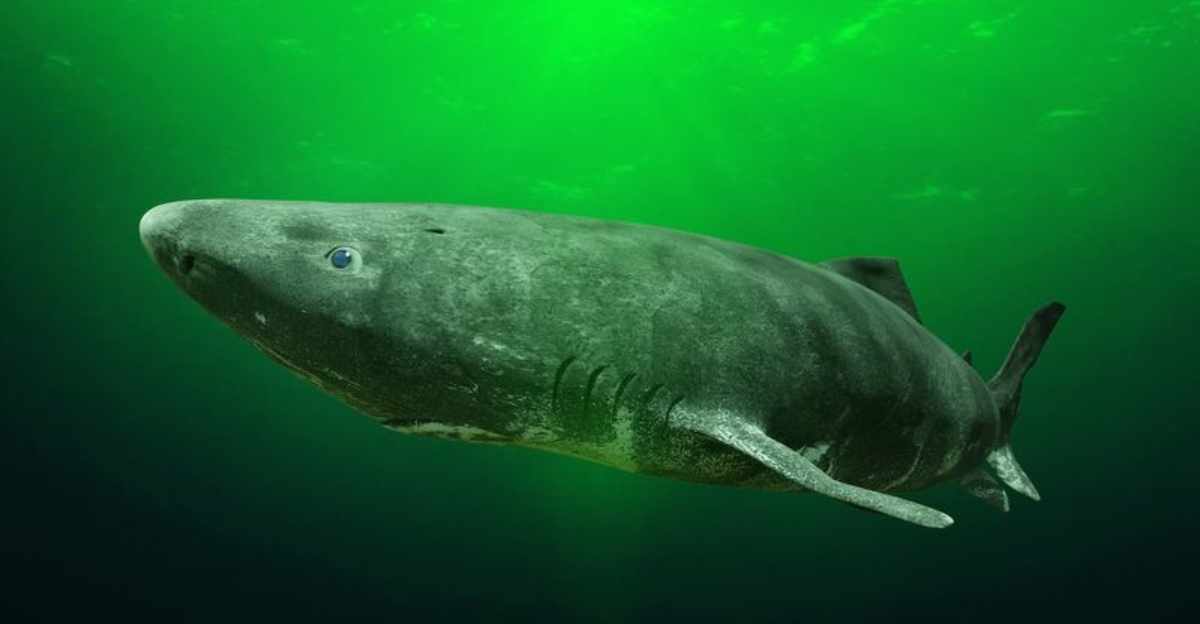
The Greenland shark is one of the ocean’s most fascinating creatures. Swimming silently in the cold, dark waters of the Arctic, these sharks can live for centuries, making them the longest-living vertebrates on Earth.
Their mysterious biology and ancient existence have captivated scientists who are still uncovering secrets about these remarkable ocean dwellers.
1. World’s Oldest Known Vertebrate
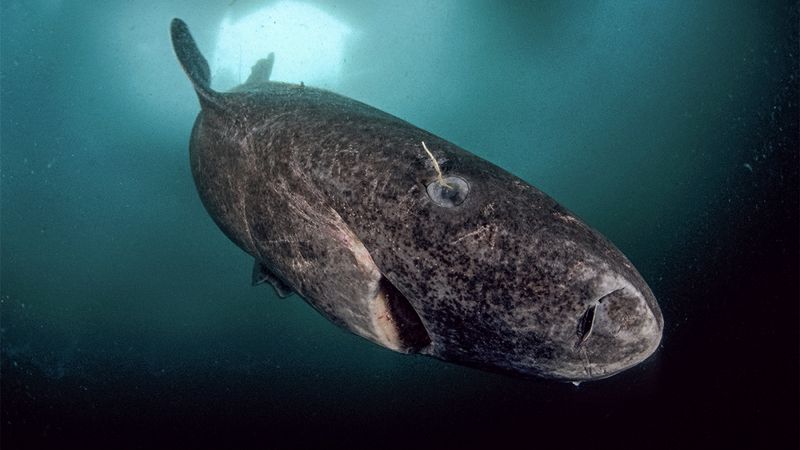
Scientists were stunned when they discovered Greenland sharks can live up to 400 years! Using radiocarbon dating on eye lens proteins, researchers found a female shark born around the time Shakespeare was writing his plays.
These ancient creatures were swimming the oceans when the Mayflower landed in America. Some sharks alive today might have been born before the United States even existed!
2. Incredibly Slow Growth Rate
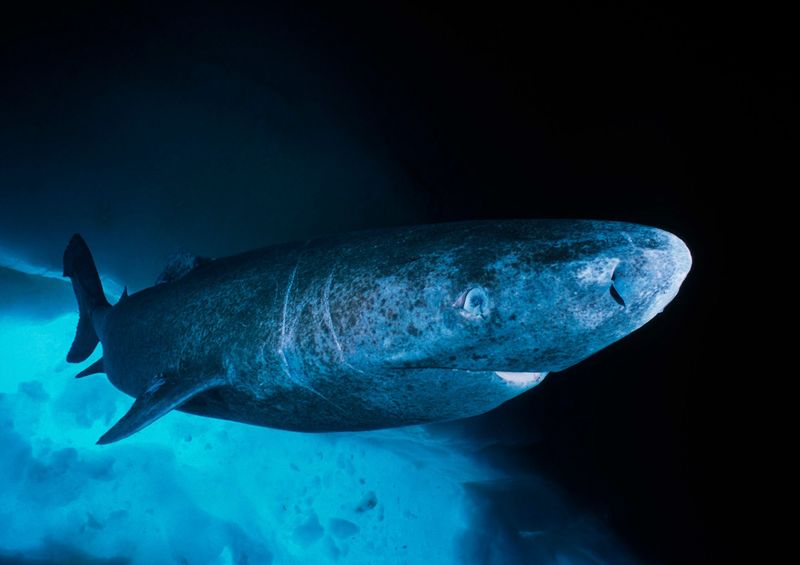
Adding just one centimeter per year to their length, Greenland sharks grow at a pace that would test anyone’s patience. This glacial growth rate contributes directly to their extraordinary lifespan.
A 16-foot Greenland shark has likely been growing for over 400 years! Their slow cellular development might hold secrets to longevity that scientists hope could benefit human medicine someday.
3. Adapted To Cold Waters
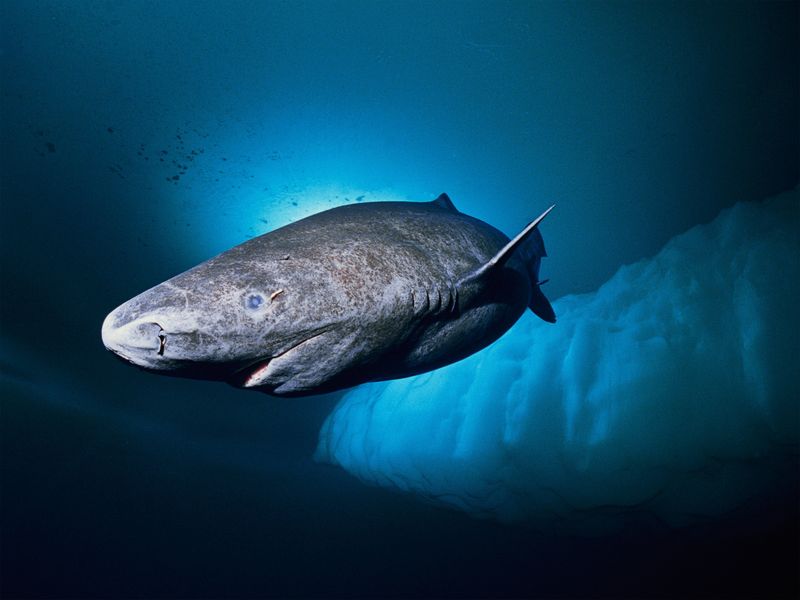
Brrr! While most sharks would freeze solid, Greenland sharks happily cruise through waters as cold as 28°F (−2°C). Their bodies contain natural antifreeze compounds that prevent their blood from crystallizing in these icy conditions.
Found primarily in the North Atlantic and Arctic Oceans, these cold-water specialists rarely venture into warmer regions. Their preference for frigid waters helps explain why they remained mysterious for so long.
4. Slow Metabolism
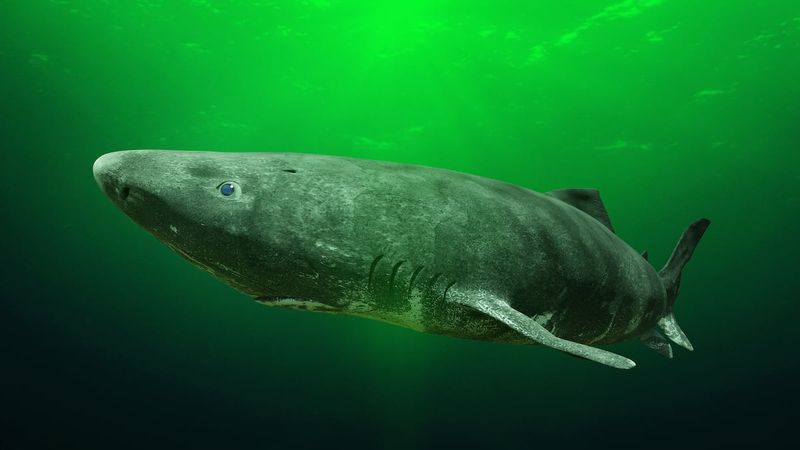
Moving at a leisurely pace of less than 1 mile per hour, Greenland sharks are the sloths of the shark world. Their heart beats just once every 10 seconds, the slowest of any vertebrate!
This ultra-slow metabolism means they burn energy at a snail’s pace. Scientists believe this energy conservation strategy is key to their incredible longevity, allowing them to survive for centuries in food-scarce environments.
5. A Mysterious Diet

What’s for dinner when you’re a centuries-old shark? Pretty much anything! Researchers examining Greenland shark stomachs have found everything from fish to seals to polar bear remains.
One shark was even found with an entire reindeer inside its stomach! As opportunistic feeders, they don’t discriminate between fresh prey and already-dead animals. Their scavenging nature helps clean the ocean floor of carcasses.
6. Predators Of The Deep
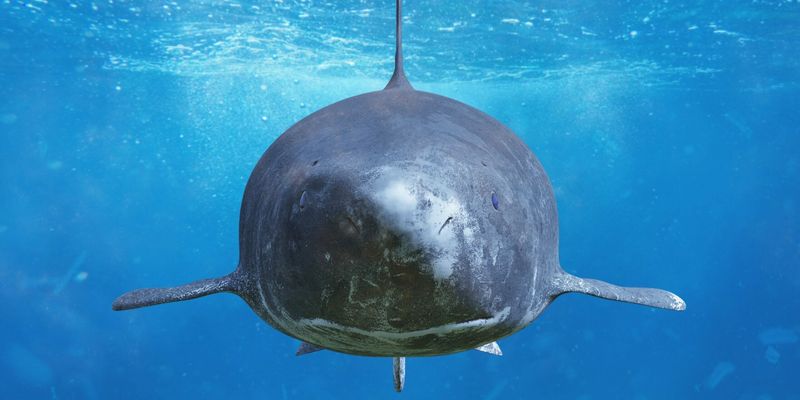
Lurking in the darkness at depths reaching 7,200 feet, Greenland sharks rule their cold domain without competition. Few creatures can survive the crushing pressure and near-freezing temperatures where these sharks thrive.
Despite their slow swimming speed, they’re effective ambush predators. Their dark gray coloration makes them nearly invisible in the deep ocean. Seals resting on ice may never see the ancient predator rising slowly from below.
7. Low-Visibility Eyesight
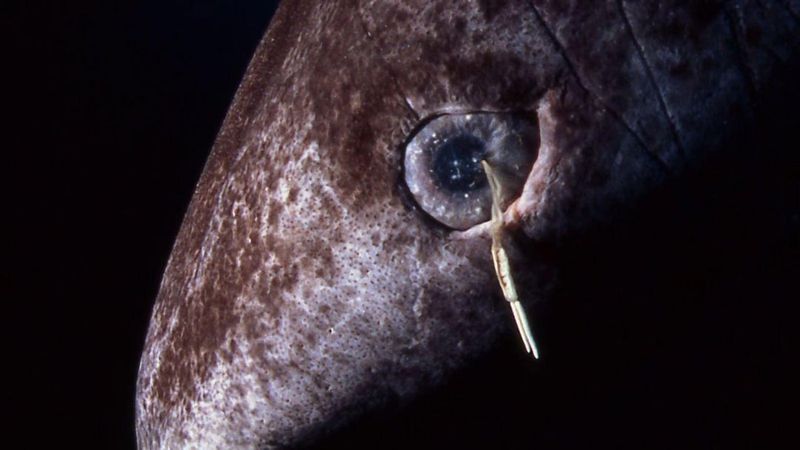
Almost every Greenland shark suffers from a bizarre condition: parasitic copepods attach to their corneas, dangling like grotesque fishing lures from their eyes. These parasites cause partial blindness in most sharks.
How do nearly-blind sharks hunt successfully? Their other senses compensate beautifully. An extraordinary sense of smell allows them to detect prey from great distances. They can also sense the electrical fields produced by hidden animals.
8. Unique Diet: Toxic To Humans
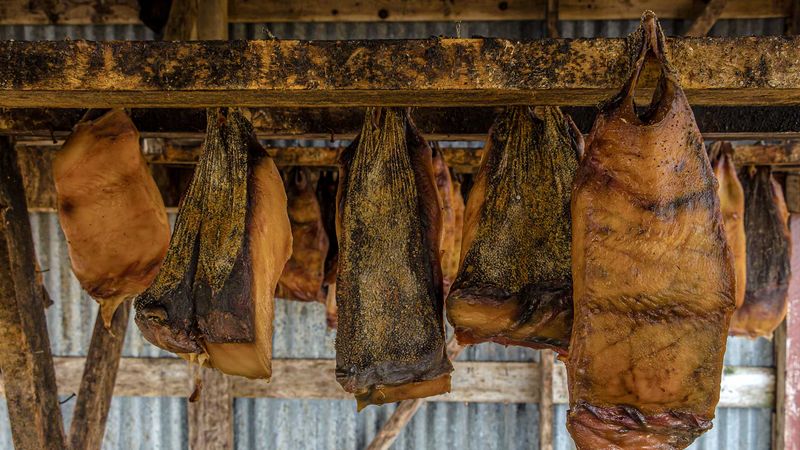
Fancy some shark for dinner? Think again! Greenland shark meat contains high levels of trimethylamine oxide, which transforms into trimethylamine—a compound that produces effects similar to extreme intoxication.
Surprisingly, Icelanders created a national dish called hákarl by fermenting the toxic meat for months. The preparation neutralizes the toxins, though the resulting food smells strongly of ammonia. Celebrity chef Anthony Bourdain once described hákarl as “the single worst thing I’ve ever put in my mouth.”
9. Mysterious Reproductive Habits
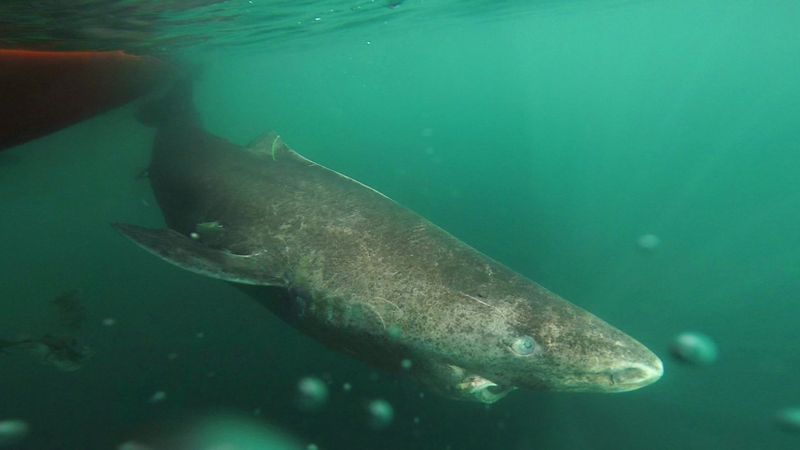
Talk about a late bloomer! Greenland sharks don’t reach sexual maturity until around 150 years of age. That’s like waiting until you’re a great-great-great-grandparent before having your first date!
Female sharks carry up to 10 pups at once, but scientists have rarely witnessed births. The gestation period remains unknown but may last several years. This slow reproduction rate makes them particularly vulnerable to population decline.
10. Tough Survivalists

Few creatures can handle the extreme conditions Greenland sharks call home. At depths of 7,200 feet, water pressure exceeds 3,200 pounds per square inch—enough to crush most submarines!
Their bodies contain high levels of urea and trimethylamine oxide, creating a natural antifreeze. This unique adaptation prevents their cells from rupturing in sub-zero temperatures. These remarkable survivalists have outlasted countless species that have gone extinct during their lifetimes.
11. Sharks With A Long History
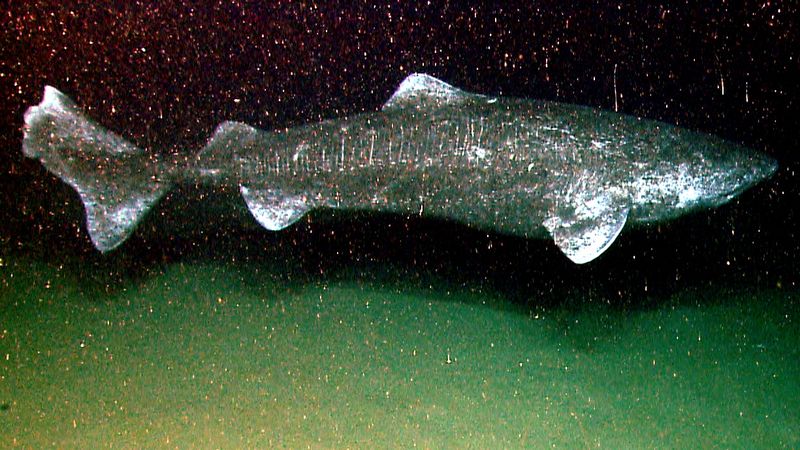
When dinosaurs roamed Earth, ancestors of today’s Greenland sharks were already patrolling the ancient oceans. Their family tree, the Somniosidae (sleeper sharks), dates back over 100 million years.
Unlike many prehistoric creatures, they’ve changed remarkably little over millennia. Their ancient lineage makes them living fossils—biological time capsules swimming through our modern oceans. A single Greenland shark might have witnessed centuries of human history unfold above the waves.
12. Important Ecological Role
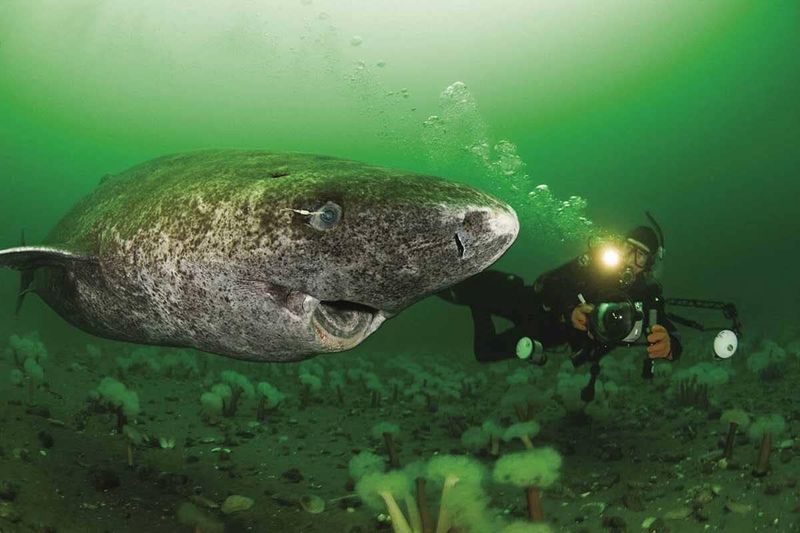
As top predators, Greenland sharks maintain the delicate balance of Arctic marine ecosystems. By controlling seal and fish populations, they prevent any single species from dominating and disrupting the food web.
Their scavenging habits make them nature’s cleanup crew, removing dead animals from the ocean floor. Climate change threatens their cold-water habitat, potentially disrupting Arctic ecosystems that have evolved alongside these ancient sharks for millennia.






